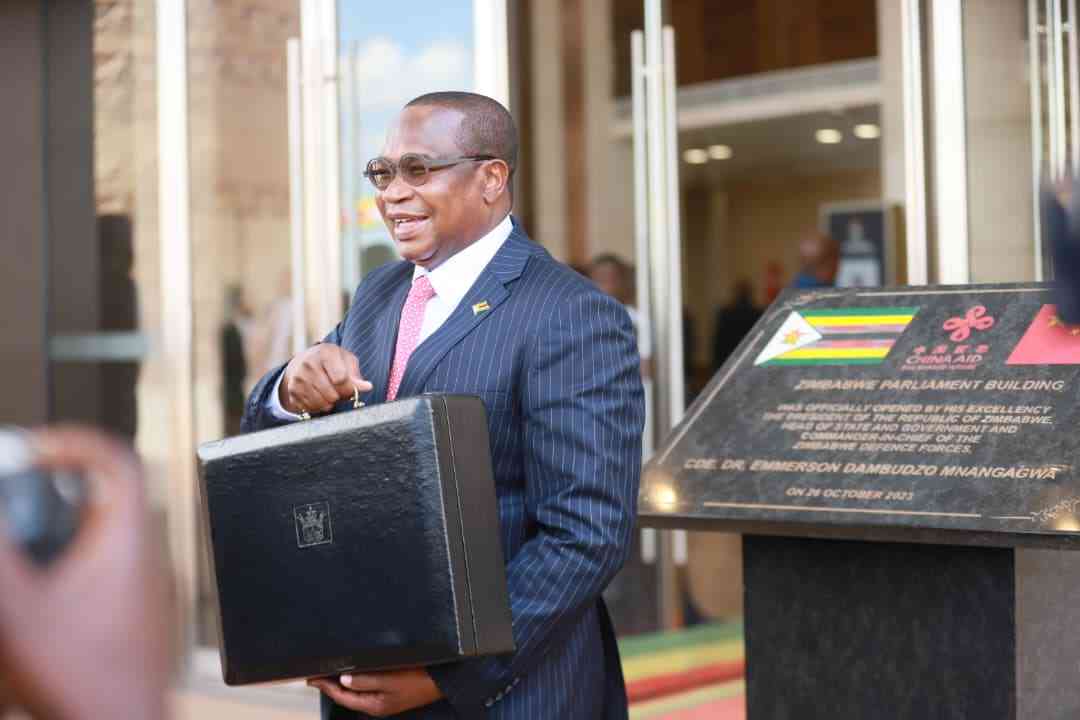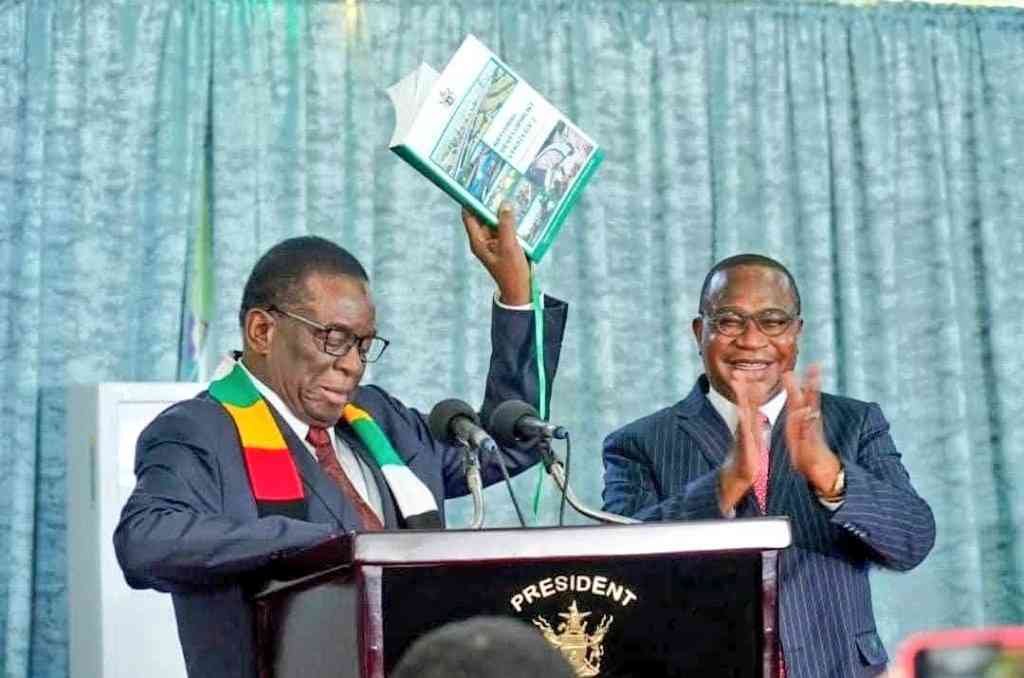
As the global climate crisis escalates, nations are racing for innovative sustainable solutions. From electric cars to reforestation, the green economy is booming — and carbon credit trading is at its core. Zimbabwe has taken a decisive step into this arena by launching a national carbon market registry, a platform designed to ensure transparency, accountability, and fair distribution of climate finance. The country is now poised to reap millions from carbon trading while safeguarding communities and the environment. But how will it all work? Who gets what share? And what is being done to prevent corruption or exploitation? Blessed Ndlovu (BN) sat down with Washington Zhakata (WZ), chief director of Climate Change in the Ministry of Environment, Climate and Meteorological Services, to unpack how Zimbabwe’s carbon market framework is set to transform climate finance and local development.
BN: Why is the government taking 30% of carbon trading proceeds — and how will that money be used?
WZ: In every carbon trading transaction, once a project is approved and carbon credits are issued, the government receives 30% of the proceeds after deductions, while 70% goes to the project proponent. That is a fair split. The 30% share is then allocated among the Ministry of Finance (as Treasury), the Zimbabwe Carbon Market Authority (ZCMA), and rural district councils — ensuring that communities directly benefit from projects in their areas.
BN: How does the carbon registry help prevent revenue leakages and track credit transactions?
WZ: The registry is a game-changer. No one handles cash directly; everything is done online. Project proponents won’t visit ministries with money — payments are monitored digitally. Both the government and registry administrators can track transactions and reconcile records. The system is block chain-based, which secures and archives data without room for tampering. Only the government and registry administrator can access it during setup and operation.
BN: Can you explain the importance of this registry system?
WZ: A carbon registry is a legal requirement. Every project and every credit must be documented and visible. We can now track all carbon credit initiatives across Zimbabwe in real time, even through geolocation maps. We can just click on a project’s location and view its type, developer, stage, and credits generated. It is a central, transparent information hub.
BN: How much revenue can Zimbabwe realistically generate from carbon credits?
- Policymakers urged to include children's rights in climate change plans
- Zim launches climate change gender action plan
- Zim announces plan to protect wetlands
- Vic Falls Carnival in wildlife conservation drive
Keep Reading
WZ: There is huge potential. Through afforestation, reforestation, waste to energy, and renewable energy projects, Zimbabwe can earn substantial income. We already have forests — state and privately-owned — that can be monetised. With government approval, over one million carbon credits are currently ready for trading. That is money waiting to be unlocked.
BN: What does the 1% of carbon reductions allocated to Zimbabwe’s climate goals achieve?
WZ: That 1% goes toward our nationally determined contributions (NDCs) under the Paris Agreement. Zimbabwe committed to reducing per capita emissions by 40%. This is not possible without counting carbon credits. The 1% helps us track progress and fulfil our global commitment — essential for attracting international climate finance and maintaining credibility.
BN: How will the “Share of Proceeds” be managed, and who is responsible?
WZ: As mentioned earlier, the government receives 30% while 70% goes to the project proponent. The funds will be managed through established government channels, including the Ministry of Finance and relevant councils. Oversight will ensure accountability.
BN: What if someone tries to by-pass the system by trading credits abroad?
WZ: That is a criminal offence, punishable by law — including jail time. All trading must go through the Zimbabwean registry. It is not negotiable.
BN: Are penalties in place for violations of the carbon trading regulations?
WZ: Yes, penalties are clearly laid out in the Environmental Management Act. We are closely monitoring the entire country. It will be very difficult for anyone to bypass the system unnoticed.
BN: How do these regulations ensure that communities benefit from carbon projects?
WZ: Communities will see real change. Funds will be distributed through rural district councils and tracked to ensure fair disbursement. The legal framework clearly outlines how proceeds are shared. Familiarity with the regulations is key for communities to hold implementers accountable.
BN: What role does the ZCMA play in enforcing developer accountability?
WZ: The ZCMA oversees the entire carbon trading framework. It ensures that developers fulfil obligations to communities and that allocated funds reach their intended destinations. It is a strong oversight mechanism.
BN: Why must foreign developers have a local presence in Zimbabwe?
WZ: How can someone implement a project remotely? They need to be on the ground, understand community needs, and work with local partners. This also helps build capacity and ensures benefits are shared locally.
BN: What if communities feel excluded or exploited in a project?
WZ: That should never happen. Before any project is approved, we conduct a due diligence exercise to confirm that communities were consulted and agreements were signed. We verify everything directly with the community. If they are not on board, the project does not proceed.
BN: Who controls the funds in the National Transaction Account — and how will they be allocated?
WZ: These funds fall under government control. The Ministry of Finance, the Auditor-General, the Accountant-General, and possibly, the Reserve Bank of Zimbabwe, will be involved. They will follow standard procedures to ensure transparency and proper use of the money.
BN: How can the government prevent carbon proceeds from being captured by elites or lost to corruption?
WZ: It is not easy to misuse government funds. Once proceeds enter the system, they are immediately distributed according to the regulations. Ministries don’t keep the money. The percentages going to communities and Treasury are fixed and must be followed.
BN: Will any funds be used for climate adaptation in vulnerable regions — or to meet broader economic needs?
WZ: Yes. Money sent to local governments and councils is earmarked for climate adaptation projects. These include building resilience to floods, droughts, and other climate shocks. The Office of the President and Cabinet has a monitoring unit to ensure the funds are used correctly.
BN: Why can’t credits in the national buffer account be sold or used, except in certain cases?
WZ: The buffer account acts like insurance. For example, if a forest project suffers a wildfire and credits are lost, buffer credits are used to offset the damage. This ensures project continuity and market trust. These credits are never traded — they are held in reserve for emergencies.










